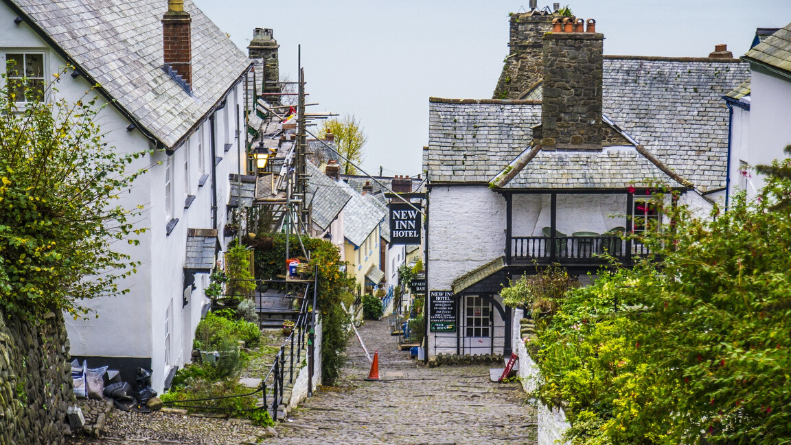How to Find Out When Your House Was Built
Why Does It Matter?
If you’re a homeowner or property investor in the UK, finding out the exact age of your house can be important for various reasons. Whether you’re considering renovations, buying home insurance, or selling your property, knowing when your house was built can provide useful insights. It can help you understand the building’s structure, predict potential issues, and even estimate its market value.
But how can you find out exactly when your house was built? Fortunately, there are several ways to do this, ranging from checking official documents to exploring the architecture of your home. In this article, we’ll walk you through the best methods to uncover the age of your property.
Checking Official Documents
One of the most straightforward ways to find out when your house was built is by checking official property documents. These can include title deeds, records from HM Land Registry, or even mortgage offers.
HM Land Registry
If you’re in England or Wales, HM Land Registry is the go-to place for property records. The Land Registry keeps detailed records on properties, including when the property was first registered. While this might not tell you the precise year of construction, it will give you an idea of when the property was first sold, which is often close to its construction date. To access this, you can apply for a copy of your property’s title deeds directly from the HM Land Registry website. Keep in mind there’s usually a small fee involved for this service.
As Jamie Johnson, CEO of FJP Investment, aptly puts it, “Knowing when your house was built is crucial for predicting maintenance costs and understanding its future resale value. It’s also something investors should be mindful of.”
Title Deeds and Mortgage Documents
If you have the original title deeds for your property, you might find that the date of construction or the first transfer of the house is mentioned. These legal documents often include valuable historical information. Similarly, your mortgage documents might contain data related to when the house was built, especially if you bought the house with a mortgage or have remortgaged in recent years.
Exploring Online Tools and Resources
The internet has made many things easier, and finding out when your house was built is no exception. Several online resources provide valuable tools for estimating your house’s age based on publicly available data.
Property Checker Websites
Websites such as Property Checker allow you to enter your postcode and get an estimate of your home’s age. These websites pull data from property databases, offering a quick and easy way to get a rough idea of when your house was built. Although the information might not always be 100% accurate, it’s a good starting point for further research .
HM Land Registry Online
Another great online resource is the HM Land Registry website itself. You can purchase official documents like title registers or title plans, which might give you clues about the age of your house. This is particularly helpful if you don’t have access to your original title deeds or mortgage documents .
Local Council Websites
Some local councils in the UK keep records of planning applications and historical data on properties. By visiting the website of your local council, you might find archived records that include the date of construction for your home. Some councils also offer direct access to historical maps, which could provide further clues.

Investigating Local History and Records
If the official documents don’t provide enough information, you can turn to local historical resources. These might be especially useful if your house is older, or if it has historical significance.
Visit Your Local Library or Archives
Local libraries and archives often have records on the development of neighbourhoods, including old maps and building plans. You might also find census records that document when houses were built in certain areas. These historical documents can be invaluable in pinpointing the exact date your house was constructed.
Contact Local Historical Societies
If your home is in an area with a rich history, there may be local historical societies that keep records on significant buildings. These organisations are often staffed by volunteers with extensive knowledge of the area’s history and can provide you with detailed information about your home.
Check Old Maps
Old maps can be a treasure trove of information. Websites such as the National Library of Scotland’s map collection or local archives provide access to historical maps that show the development of specific areas over time. By comparing maps from different eras, you might be able to determine approximately when your house was built .
Using Architectural Features as Clues
Sometimes, the architecture of your home can tell you more than any document or online resource. By examining certain architectural features, you can often estimate the period during which your house was built.
Styles of Windows, Roofs, and Doors
Different architectural periods have distinct styles. For example, Victorian houses (1837-1901) often have sash windows, intricate brickwork, and high ceilings. Edwardian homes (1901-1914), on the other hand, tend to feature bay windows, wooden porches, and larger rooms. More modern properties, such as those built in the 1930s, often have curved bay windows, pebble-dash exteriors, and detached garages.
Brickwork and Building Materials
The type of brick or stone used can also be a clue. Houses built in the Georgian era (1714-1830) often used red or yellow brick, while properties built in the mid-20th century might feature more concrete or prefabricated materials. If you know when certain materials were popular, you can make an educated guess about the age of your home.
Chimneys and Fireplaces
Older homes, especially those built before central heating became widespread, often feature large chimneys and multiple fireplaces. Over time, as heating technology advanced, chimneys became smaller and less prominent. A detailed look at your home’s chimney and fireplaces could provide another clue about its age.
Using Surveys and Professionals
If you’re still unsure about your house’s age, or if you need an accurate estimate for legal or financial purposes, you may want to hire a professional. Chartered surveyors and building historians specialise in assessing the age of properties and can provide a detailed report.
Hiring a Chartered Surveyor
Chartered surveyors often carry out home surveys for buyers and sellers, but they can also help determine the age of a property. Using their expertise and tools, they can inspect the structure of your home, check historical records, and give you an accurate date or period when the house was built. This can be especially useful if you’re dealing with an older or listed property that requires specialist knowledge.
Homebuyer Reports and Surveys
When purchasing a house, many people opt for a homebuyer report, which might include details about the age of the house. If you still have a copy of your homebuyer report, check the section on the property’s history. This document can be an easy way to get information about your home’s construction date without further research .
Uncovering the Age of Your House
Finding out when your house was built can be an exciting and valuable process, whether you’re a homeowner or an investor. It can give you insights into the building’s construction, its historical significance, and its potential future value.
From checking official records like title deeds and mortgage documents to exploring online tools and using architectural features, there are multiple ways to get the information you need. Sometimes, the clues are hidden in plain sight—in the windows, doors, or even the materials used to build the house.
If all else fails, professionals such as chartered surveyors and historical researchers can offer the expertise needed to pinpoint your home’s age with precision. After all, understanding the age of your property can lead to better decision-making, whether you’re planning renovations or investing in new properties.
In the words of Jamie Johnson, “Knowing the age of a property not only adds to its charm, but it also helps investors make smarter decisions. It’s the key to understanding the history and future potential of your investment.”
By following these steps, you’ll be able to unravel the mystery of your home’s construction date and get a deeper understanding of its place in history. Whether you’re curious for personal reasons or looking for a strategic edge in the property market, this knowledge is invaluable.
ARE YOU READY TO START INVESTING?
Subscribe to our mailing list now for exclusive deals, investment guides and the latest information from the property market.







